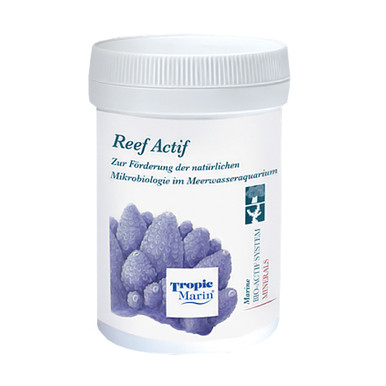sixty_reefer
5000 Club Member
View BadgesArticle Contributor
UK Reef Club Member
Hospitality Award
R2R Research
Not to be confused with other similar threads were you are required to work hard, I’m a laid back kinda reefer and hard work is just not for me, sorry I prefer to allow the bacteria to do that work for me.
The goal of this thread is to discuss and illustrate the use of carbohydrates into clean reef tanks from pollutant that aid the growth of algae and other nuisances bringing biofloc knowledge to the reef aquaria hobby.
Peer reviewed paper

 www.ncbi.nlm.nih.gov
www.ncbi.nlm.nih.gov
( Not that anyone going to read anyways, folks just like to see links )
The above paper illustrates that the use of carbohydrates can be used to reduce ammonia and other pollutants in a system by just feeding the bacteria, yes that’s that simple bacterIa also requires feeding the more carbon they get the more nitrogen and phosphorus compounds they will assimilate into body mass.
To remove the bacteria and the nutrients assimilated from the system is fairly simple, just perform a water change if you don’t have a skimmer, introducing filter feeders to prey on the bacteria and transfer those nutrients into the filter feeder body mass, zooplankton will also prey on bacteria and get eaten by fish transferring nutrients that way by trophic levels and natural as you would see it happen in the sea.
I’m not suggesting to anyone to use tapioca, molasses or sucrose into they’re system, we’re not on a cooking forum just be smart and use the only source of carbohydrates that I know that are made for reef systems, just get some Reef actif and fallow instructions (I don’t own any shares in the company by the way) I just find the product fairly safe to use for any level of experience in aquaria.
Example of a new system, 9 months or so that never had an algae issue, gets a crazy amount of food and often feed reef actif daily after light out.
there is no GAC or GFO from the beginning, there is no mechanical filtration every nutrient that goes in will end up in the fish belly or in a coral filter feeder etc… glass maintenance is just every 3-4 weeks not really sure I think last time I clean it was around Xmas there was many feather dusters starting to grow on it
 youtube.com
youtube.com
Still better than having to clean the tank myself imo.
Happy to hear any thoughts from others
The goal of this thread is to discuss and illustrate the use of carbohydrates into clean reef tanks from pollutant that aid the growth of algae and other nuisances bringing biofloc knowledge to the reef aquaria hobby.
Peer reviewed paper

Effect of different biofloc starters on ammonia, nitrate, and nitrite concentrations in the cultured tilapia Oreochromis niloticus system
Background: High stocking density and intensive feeding in aquaculture systems lead to the accumulation of organic waste, which results in an increase in ammonia, nitrite, and nitrite concentrations in culture media. Biofloc is a potential technology ...
( Not that anyone going to read anyways, folks just like to see links )
The above paper illustrates that the use of carbohydrates can be used to reduce ammonia and other pollutants in a system by just feeding the bacteria, yes that’s that simple bacterIa also requires feeding the more carbon they get the more nitrogen and phosphorus compounds they will assimilate into body mass.
To remove the bacteria and the nutrients assimilated from the system is fairly simple, just perform a water change if you don’t have a skimmer, introducing filter feeders to prey on the bacteria and transfer those nutrients into the filter feeder body mass, zooplankton will also prey on bacteria and get eaten by fish transferring nutrients that way by trophic levels and natural as you would see it happen in the sea.
I’m not suggesting to anyone to use tapioca, molasses or sucrose into they’re system, we’re not on a cooking forum just be smart and use the only source of carbohydrates that I know that are made for reef systems, just get some Reef actif and fallow instructions (I don’t own any shares in the company by the way) I just find the product fairly safe to use for any level of experience in aquaria.
Example of a new system, 9 months or so that never had an algae issue, gets a crazy amount of food and often feed reef actif daily after light out.
there is no GAC or GFO from the beginning, there is no mechanical filtration every nutrient that goes in will end up in the fish belly or in a coral filter feeder etc… glass maintenance is just every 3-4 weeks not really sure I think last time I clean it was around Xmas there was many feather dusters starting to grow on it
- YouTube
Enjoy the videos and music you love, upload original content, and share it all with friends, family, and the world on YouTube.
Still better than having to clean the tank myself imo.
Happy to hear any thoughts from others




















